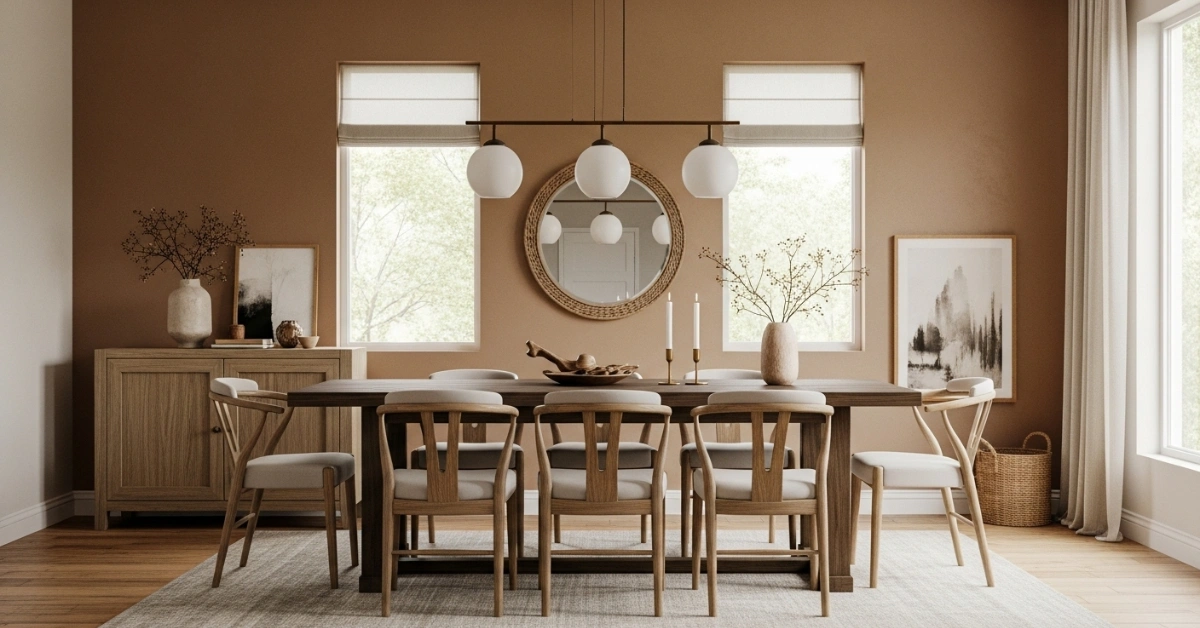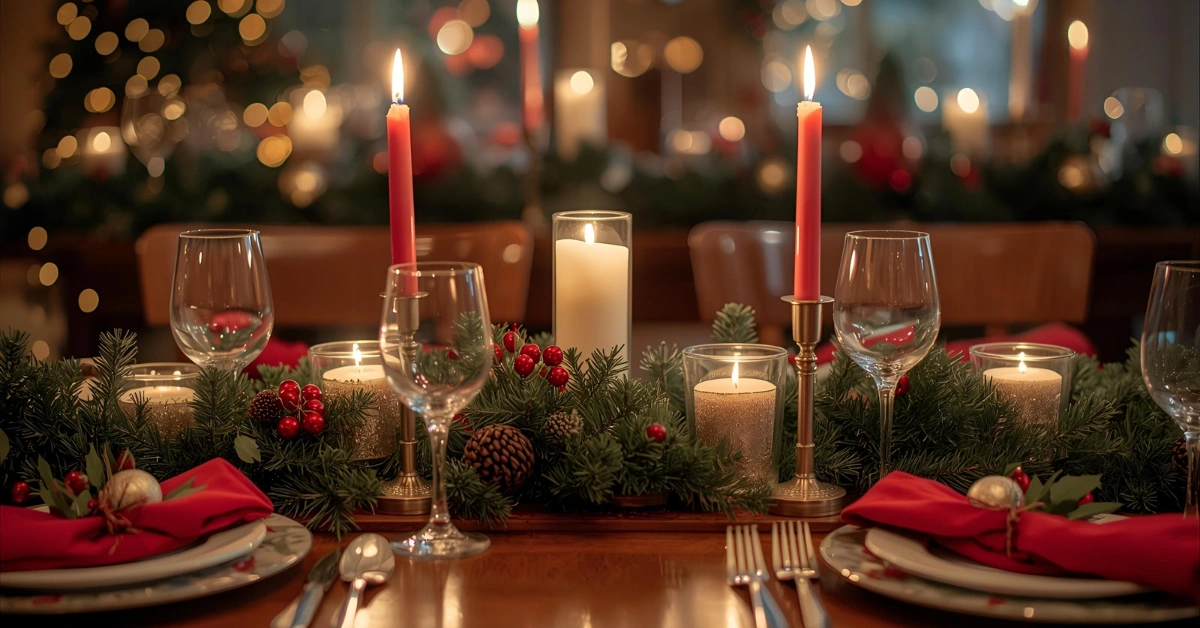1970s Dining Room Ideas: Retro Style for Modern Homes

The 1970s dining room aesthetic is experiencing a revival, but many homeowners struggle to blend its bold, retro charm with modern functionality. The vibrant colors, funky patterns, and unique furniture of the era can feel overwhelming when trying to create a cohesive, stylish space that works for today’s lifestyle.
This guide offers a solution: a detailed roadmap to designing a 1970s-inspired dining room that feels fresh, functional, and timeless. From iconic furniture choices to color palettes and practical tips, you’ll find everything you need to transform your dining area into a retro masterpiece that suits 2025 and beyond.

The Essence of a 1970s Dining Room
The 1970s was a decade of bold expression, with dining rooms reflecting a mix of mid-century modern influences, bohemian flair, and a touch of disco glamour. According to design historian Charlotte Fiell, author of Modern Furniture Classics Since 1945, the era embraced “optimism and experimentation in form and material” (Fiell, 2013). Dining spaces were no longer just functional, they became social hubs where creativity thrived.
Key elements included vibrant color schemes, organic shapes, and a mix of natural and synthetic materials. Think avocado green, mustard yellow, shag rugs, and teak furniture. These spaces were designed to spark conversation and showcase personality, a trend that resonates with today’s desire for unique, Instagram-worthy interiors.

Characteristics of 1970s Dining Room Design
- Bold Colors: Earthy tones like burnt orange, olive green, and mustard yellow dominated, often paired with pops of bright red or turquoise.
- Mixed Materials: Teak wood, chrome, glass, and plastic were used together for a dynamic look.
- Statement Furniture: Sculptural chairs, oval dining tables, and modular storage units were iconic.
- Patterns and Textures: Geometric prints, floral motifs, and tactile fabrics like velvet or corduroy added visual interest.
- Lighting: Lava lamps, sputnik chandeliers, and pendant lights with bold shapes created ambiance.

Why Choose a 1970s Dining Room Style Today?
The 1970s aesthetic is perfect for homeowners who want a dining room that feels nostalgic yet fresh. Its versatility allows you to mix vintage pieces with modern elements, creating a space that’s both functional and stylish. Interior designer Sarah Johnson, who specializes in retro-inspired spaces, notes, “The 1970s style is about individuality. It’s a chance to break free from minimalism and embrace bold, personal design choices.”
This style also aligns with current sustainability trends. Many 1970s furniture pieces, like teak dining tables, are durable and widely available in vintage markets, making it easy to create an eco-friendly space. Plus, the era’s love for natural materials like wood and rattan fits perfectly with today’s biophilic design movement.
How to Design a 1970s Dining Room: 15 Practical Tips
Below are 15 actionable tips to help you create a 1970s dining room that balances retro charm with modern appeal. Each tip includes design inspiration and practical advice to satisfy your search for ideas.
1. Embrace a Bold Color Palette
The 1970s dining room was all about vibrant, earthy hues. Choose a base color like avocado green, burnt orange, or mustard yellow for walls or furniture. Pair it with contrasting accents, such as turquoise or red, for a dynamic look. For example, painting an accent wall in olive green and adding mustard yellow dining chairs can instantly evoke the era.

Tip: If bold walls feel too daring, use neutral tones like beige or cream and incorporate color through accessories like curtains, rugs, or tableware.
2. Invest in a Teak Dining Table
Teak was the wood of choice in the 1970s for its durability and warm grain. A teak dining table preferably oval or rectangular with clean lines, is a must-have for authenticity. Vintage stores or online marketplaces like Chairish often have restored pieces from brands like G-Plan or Nathan Furniture.

Tip: Look for tables with extendable leaves to accommodate modern entertaining needs. A 6–8-seat table is ideal for most dining rooms.
3. Choose Sculptural Dining Chairs
Dining chairs in the 1970s were anything but ordinary. Opt for chairs with curved, organic shapes or bold upholstery in velvet or corduroy. For example, the Cesca chair by Marcel Breuer, with its tubular steel frame and cane seat, was a staple of the era.
Tip: Mix and match chair styles for an eclectic look, but keep a unifying element like wood tone or upholstery color.

4. Add a Statement Chandelier
Lighting was a focal point in 1970s dining rooms. Sputnik chandeliers, with their starburst design, or large, dome-shaped pendant lights in chrome or glass, were popular choices. “A bold chandelier can transform a dining room into a conversation starter,” says interior designer Mark Evans.

Tip: Look for vintage-inspired fixtures from brands like West Elm or Etsy sellers. Ensure the chandelier’s scale matches your table size—aim for 1/2 to 2/3 the table’s width.
5. Incorporate Geometric Patterns
Geometric patterns were everywhere in the 1970s, from wallpaper to rugs. Choose a bold, graphic rug with hexagons or chevrons to anchor the space. Alternatively, use patterned wallpaper on one wall for a focal point.

Tip: Balance bold patterns with solid colors to avoid overwhelming the room. For example, pair a geometric rug with plain upholstery.
6. Mix Textures for Depth
The 1970s dining room thrived on tactile contrast. Combine smooth teak with plush velvet, shaggy rugs, or woven rattan. For instance, a teak credenza paired with a velvet-upholstered bench creates a rich, layered look.

Tip: Add texture through small details like macramé wall hangings or woven placemats for an authentic touch.
7. Use Retro-Inspired Tableware
Tableware in the 1970s was colorful and playful. Look for ceramic plates in earthy tones, glassware with amber or smoked hues, and flatware with wooden or plastic handles. Brands like Heath Ceramics offer modern takes on 1970s-style tableware.

Tip: Thrift stores are a treasure trove for vintage Pyrex or Corelle dishware, which is both affordable and authentic.
8. Add a Bar Cart for Disco Glam
A chrome or brass bar cart was a staple in 1970s dining rooms, perfect for entertaining. Style it with retro glassware, a cocktail shaker, and a few decorative items like a small lava lamp.

Tip: Place the cart in a corner or near a credenza to keep the dining area uncluttered.
9. Incorporate Plants for a Bohemian Vibe
The 1970s embraced nature, with potted plants and hanging macramé planters adding a bohemian touch. Choose large, leafy plants like monstera or fiddle-leaf figs to create a lush atmosphere.

Tip: Use ceramic or terracotta pots in earthy tones to complement the retro aesthetic.
10. Opt for a Shag Rug
A shag rug under the dining table adds warmth and texture, a hallmark of 1970s design. Choose a rug in a bold color like rust or olive, or go neutral with cream or brown for versatility.

Tip: Ensure the rug is large enough to extend at least 2 feet beyond the table’s edges to accommodate chairs.
11. Use Modular Storage
Credenzas and sideboards in the 1970s were often modular, with clean lines and ample storage. A teak or rosewood credenza can double as a serving station and storage for tableware.

Tip: Look for pieces with sliding doors or unique hardware for an authentic 1970s feel.
12. Add Retro Wall Art
Wall art in the 1970s was bold and expressive. Think abstract prints, pop art, or macramé wall hangings. A large, colorful canvas above the credenza can tie the room together.

Tip: Frame vintage posters or album covers for a budget-friendly, authentic touch.
13. Balance Retro with Modern Elements
To keep your 1970s dining room from feeling like a museum, blend retro elements with modern touches. For example, pair a teak table with sleek, minimalist chairs or add contemporary artwork.

Tip: Use neutral walls or flooring to create a modern backdrop for bold 1970s furniture.
14. Create a Cozy Ambiance
The 1970s dining room was a social space, designed for long dinners and lively conversations. Use warm lighting, like table lamps or candles, to create an inviting atmosphere.

Tip: Dimmer switches are a great way to adjust lighting for different occasions, from casual meals to formal gatherings.
15. Source Vintage Pieces Sustainably
Sustainability is a key concern in 2025, and the 1970s aesthetic aligns perfectly with this trend. Shop at thrift stores, flea markets, or online platforms like eBay for authentic pieces. “Vintage furniture is not only eco-friendly but also tells a story,” says designer Emily Carter.

Tip: Check for quality when buying vintage, look for solid wood construction and minimal damage.
Common Mistakes to Avoid in a 1970s Dining Room
While the 1970s aesthetic is fun, it’s easy to go overboard. Here are some pitfalls to avoid:
| Mistake | Why It’s a Problem | How to Fix It |
|---|---|---|
| Too Many Bold Colors | Overwhelms the space | Stick to 2–3 main colors with neutral accents |
| Overcrowded Patterns | Creates visual clutter | Use one bold pattern and balance with solids |
| Ignoring Scale | Furniture feels mismatched | Measure your space and choose appropriately sized pieces |
| Poor Lighting | Diminishes ambiance | Combine overhead, task, and accent lighting |
Real-World Example: A 1970s Dining Room Makeover
Last year, I helped a friend transform her dining room into a 1970s-inspired space. She found a teak dining table at a local flea market and paired it with reupholstered velvet chairs in burnt orange. A sputnik chandelier from a vintage shop became the room’s centerpiece, while a shag rug and macramé plant hangers added texture. The result? A space that felt nostalgic yet modern, perfect for hosting dinner parties.

This project taught me the importance of balancing bold elements with neutral ones to avoid overwhelming the room. It’s a practical lesson you can apply to your own design.
Conclusion: Bring the 1970s Dining Room to Life
A 1970s dining room is more than a design choice, it’s a statement of personality and creativity. By blending bold colors, iconic furniture, and tactile textures, you can create a space that’s both nostalgic and timeless. Whether you’re drawn to the era’s vibrant hues or its sculptural furniture, this guide provides the inspiration and practical tips you need to craft a dining room that stands out.
Ready to start your retro journey? Explore vintage markets, experiment with bold colors, and let your creativity shine. Share your 1970s dining room ideas in the comments or connect with a local interior designer to bring your vision to life!






